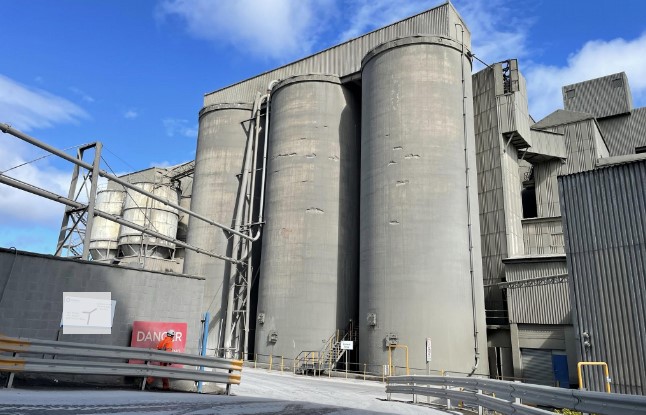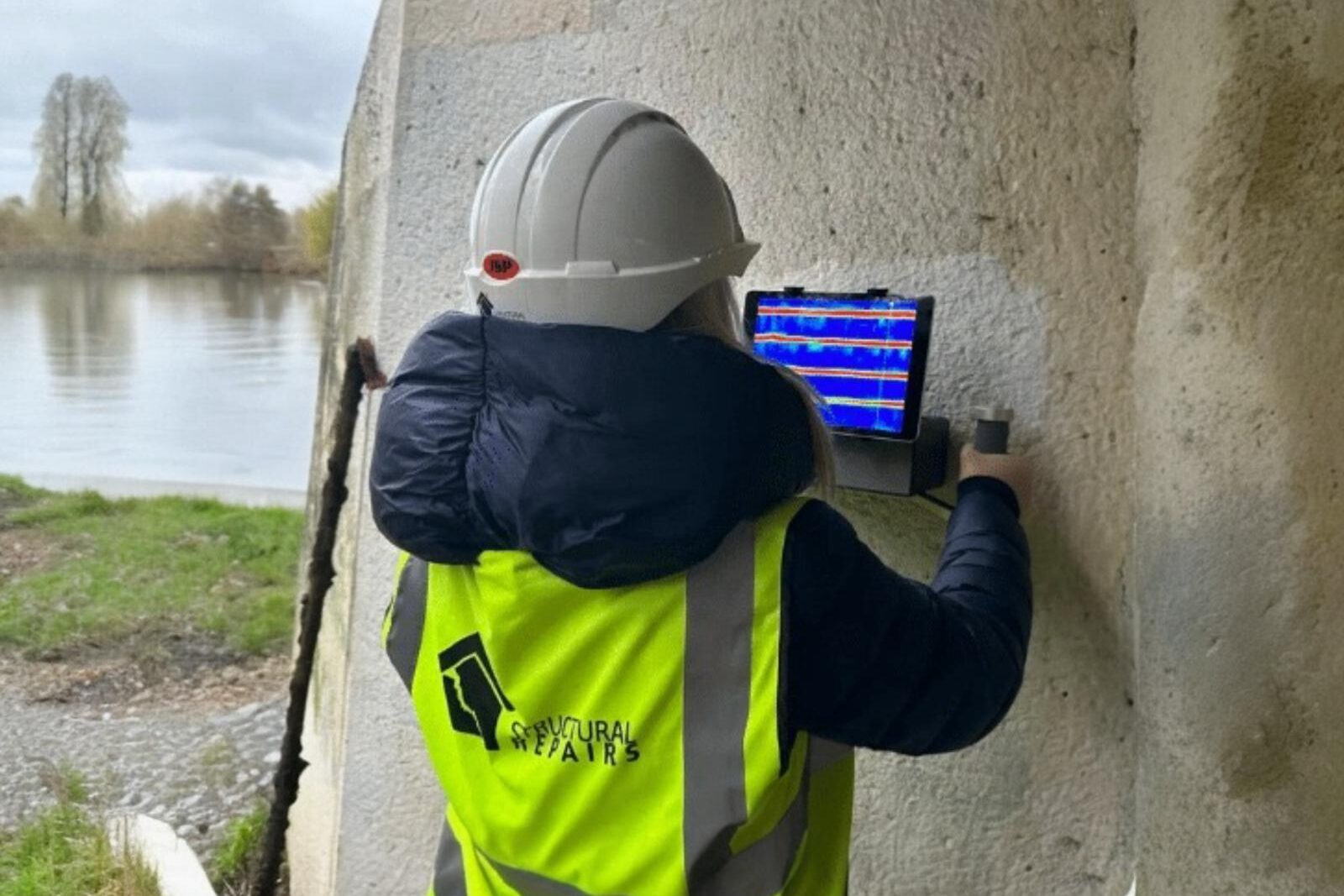Detección del Desconchamiento del Hormigón: Métodos modernos para identificar el hormigón estructural deteriorado
Cada edificio cuenta una historia, a través de los susurros de desconchones, grietas finas y manchas sutiles que sólo los expertos pueden leer de verdad. ¿Ese hormigón desconchado de tu pared? Puede estar diciendo mucho sobre la salud de tu edificio. Cuando se trata de la integridad estructural, el desconchamiento y la delaminación del hormigón pueden plantear graves riesgos que van más allá del mero daño superficial.

Entender el Desconchamiento: ¿Qué significa desconchamiento del hormigón?
El desconchamiento (también conocido como desconchamiento del hormigón o desprendimiento del hormigón) es una forma grave de deterioro en la que la capa superficial del hormigón se desprende, revelando a menudo el material dañado que hay debajo. Este proceso de desconchamiento puede afectar a diversas estructuras, desde el desconchamiento de ladrillos hasta el de superficies de cemento. Los ingenieros estructurales profesionales reconocen que lo que parece un desprendimiento menor a menudo revela problemas subyacentes más importantes que exigen atención inmediata.
El proceso de deterioro y desconchamiento del hormigón
El deterioro superficial y el desconchamiento actúan como adversarios sigilosos, empezando sutilmente antes de comprometer gradualmente la integridad estructural de un edificio. El significado de los desconchones se aclara cuando entiendes cómo se desarrollan: al igual que el testigo de revisión del motor de un vehículo, estas señales de advertencia temprana -desde superficies desconchadas hasta manchas de óxido- exigen una evaluación profesional inmediata. Sin una intervención adecuada, los desconchones pueden convertirse en graves problemas estructurales que podrían comprometer la seguridad de todo el edificio.
El destructor silencioso: Interacción del agua y el acero en el hormigón agrietado
En el centro del proceso de desconchamiento se encuentra la vulnerabilidad de las barras de refuerzo de acero (barras corrugadas). Estos componentes estructurales esenciales, incrustados en el hormigón, se enfrentan a un riesgo significativo cuando se exponen a la humedad. La reacción química resultante inicia la oxidación, provocando la expansión del acero. Esta expansión crea una presión adicional dentro del hormigón, lo que provoca el desconchamiento y acelera el ciclo de deterioro. Entender qué es el desconchamiento del hormigón empieza por reconocer estas interacciones fundamentales.
La amenaza química: Carbonatación y desconchamiento del hormigón
Quizá la amenaza más insidiosa proceda de la carbonatación, un proceso químico que afecta a las estructuras de hormigón de todo el mundo y a menudo provoca desconchamientos. Cuando el dióxido de carbono atmosférico reacciona con el hidróxido de calcio del hormigón, reduce gradualmente los niveles de pH del material. Esta transformación química compromete la protección natural que el hormigón proporciona a su armadura de acero. El resultado se manifiesta en la formación acelerada de óxido, la degradación de la superficie y, en última instancia, la necesidad de grandes reparaciones estructurales.
Evolución de los métodos de detección: De las simples derivaciones a los ensayos avanzados de fragmentos
En décadas anteriores, la evaluación estructural se basaba en métodos básicos pero prácticos. El método principal, la prueba de golpeteo, consistía en golpear las superficies de hormigón para identificar posibles desconchones escuchando sonidos huecos que pudieran indicar problemas estructurales. Aunque los profesionales experimentados podían obtener resultados razonables en la detección de los primeros signos de desprendimiento, este método carecía de precisión y fiabilidad. El muestreo de testigos ofrecía una visión más detallada del deterioro, pero requería perforar las estructuras, un proceso eficaz pero destructivo que podía comprometer la integridad estructural.
Soluciones modernas: La Revolución en la Tecnología de Evaluación del Deterioro Superficial
La evaluación estructural actual ha evolucionado hacia una sofisticada mezcla de tecnologías avanzadas, lo que supone un cambio drástico respecto a los métodos tradicionales. Los métodos modernos de escaneado para detectar la delaminación y el desconchamiento del hormigón representan un salto cuántico, comparable al avance de los estetoscopios básicos a las máquinas de resonancia magnética en el diagnóstico médico. El radar de penetración en el suelo (GPR), la tecnología de ultrasonidos y las amplias capacidades de cartografía en 3D proporcionan ahora una visión sin precedentes de las estructuras de hormigón desconchadas. Estos métodos no invasivos ofrecen una detección precisa del deterioro, los huecos, la corrosión de las armaduras y la entrada de agua, eliminando la necesidad de pruebas destructivas y ofreciendo una precisión superior.

Visión de experto: El valor de la detección precoz del desconchamiento
Según Roger Line, director general de Reparaciones Estructurales y autor de “Prolongación de la vida útil de edificios y estructuras”, los paralelismos entre la salud estructural y la prevención de desprendimientos son sorprendentes. “Considera esta perspectiva: no esperarías a que se te cayera un diente para visitar al dentista. El mismo principio se aplica a la prevención del deterioro superficial y al mantenimiento de la integridad de los edificios”, explica Line.
Mediante métodos de detección avanzados, los problemas de desconchamiento pueden identificarse y abordarse antes de que se conviertan en costosos problemas.
Este enfoque proactivo del mantenimiento, en lugar de las reparaciones reactivas, ha demostrado ser revolucionario sobre el terreno. Cuando los posibles desprendimientos se detectan a tiempo, no sólo se ahorran costes significativos, sino que se prolonga la vida útil de los edificios durante décadas. La integración de la tecnología moderna con la experiencia en ingeniería ofrece ahora una precisión sin parangón en la evaluación estructural y la detección del deterioro. Cada edificio recibe una atención meticulosa al detalle, lo que garantiza su longevidad y seguridad durante años. Esto representa algo más que un avance tecnológico: es un cambio fundamental en la forma de enfocar la conservación de los edificios y la integridad estructural para las generaciones futuras.
¿Buscas servicios profesionales de evaluación del hormigón? Ponte en contacto con nuestro equipo de expertos en estructuras para una evaluación completa de tu edificio.